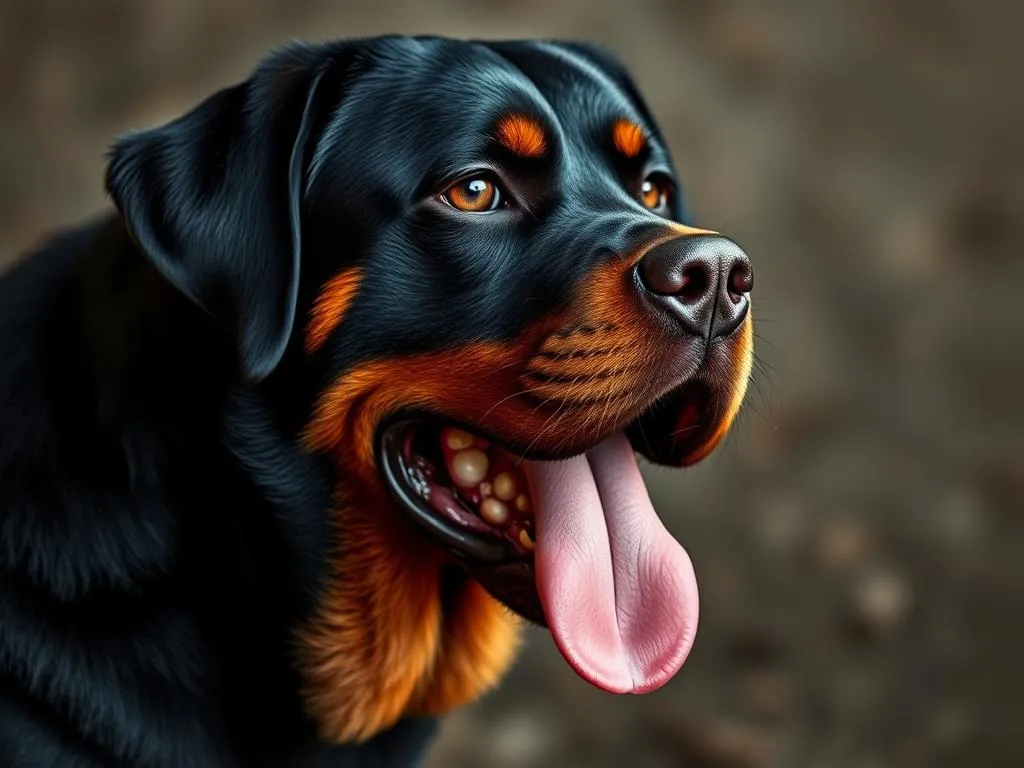
Introduction
The Rottweiler is one of the most recognizable dog breeds in the world, renowned for its strength, loyalty, and intelligence. Understanding the Rottweiler history enriches our appreciation for this remarkable breed and provides insights into its characteristics and behavior. Knowledge of the breed’s past can help potential owners make informed decisions and foster a deeper bond with their Rottweiler.
In this article, we will delve into the Rottweiler history, exploring its origins, evolution through the ages, and its current status in society. We will highlight the breed’s roles throughout history, dispel some common misconceptions, and provide a comprehensive overview of what makes Rottweilers unique.
The Origins of the Rottweiler
Ancient Ancestry
The roots of the Rottweiler can be traced back to ancient times. Its ancestors were the Roman drover dogs, powerful canines used for herding livestock and guarding property. These dogs accompanied Roman armies across Europe, helping to transport goods and protect valuable resources.
The geographic origins of the Rottweiler lie primarily in the regions of modern-day Germany. As the Roman Empire expanded, the need for reliable herding and guard dogs grew, leading to the development of breeds that would later influence the Rottweiler.
Historical Development
The Rottweiler breed truly began to take shape in the town of Rottweil, Germany, during the Middle Ages. Here, they were used as herding dogs, tasked with driving cattle to market and protecting their owners’ livelihoods. The breed’s robust build and remarkable stamina made it an invaluable asset for farmers and merchants.
During the Roman Empire, Rottweilers played a significant role in herding and guarding. They were well-respected for their ability to manage large herds of cattle and their protective instincts. The breed’s functionality in these roles laid the groundwork for its development into the versatile dog we know today.
The Rottweiler in the Middle Ages
The Rise of the Rottweiler
As Europe transitioned into the Middle Ages, the role of the Rottweiler evolved. The breed began to shift from primarily herding to guarding and protection. Butchers and farmers recognized the Rottweiler’s natural protective instincts and began employing them as guard dogs for their properties and livestock.
The loyalty and courage of Rottweilers made them ideal companions for those needing protection. They became a common sight in marketplaces, where they safeguarded butcher shops and stalls, ensuring that their owners felt secure in their business dealings.
The Impact of Industrialization
The arrival of industrialization brought significant changes to the role of Rottweilers. Urbanization led to a decline in traditional farming practices, and with it, the demand for herding and guarding dogs diminished. As a result, Rottweilers faced near extinction in the late 19th century.
However, the breed’s adaptability ensured that it wouldn’t fade away entirely. Some dedicated breeders began to focus on preserving the Rottweiler’s lineage, recognizing the importance of this loyal breed in society.
The Rottweiler in the Modern Era
The Revival of the Breed
In the late 19th and early 20th centuries, efforts to revive the Rottweiler gained momentum. Breed clubs formed, and enthusiasts worked to standardize the breed, ensuring that its traits were preserved and promoted. The first official breed standard was established in 1901, marking a turning point in Rottweiler history.
These efforts were crucial in re-establishing the Rottweiler as a respected breed. As interest in dog shows and competitions grew, Rottweilers began to regain their popularity among dog lovers around the world.
Rottweilers in World Wars
The adaptability of the Rottweiler was further demonstrated during World War I and World War II. Rottweilers served honorably in various military roles, including as messenger dogs, guard dogs, and search-and-rescue companions. Their strength and intelligence made them valuable assets in challenging wartime environments.
The breed’s contributions during these tumultuous times solidified its reputation as a reliable working dog. This period in Rottweiler history showcased not only their physical capabilities but also their unwavering loyalty to their handlers.
The Rottweiler Today
Popularity and Recognition
Today, the Rottweiler stands as one of the most popular dog breeds globally. They are frequently seen in dog shows, competitions, and as family pets. According to the American Kennel Club, Rottweilers consistently rank among the top ten breeds in terms of registrations, reflecting their enduring appeal.
Their impressive stature, intelligence, and versatility make them suitable for various roles, from service dogs to family companions. Rottweilers are known for their strong bond with their families, often becoming protective and affectionate members of the household.
Role in Society
In contemporary society, Rottweilers serve numerous roles. They are increasingly recognized as excellent family pets, known for their loyalty and protective nature. Their intelligence makes them suitable candidates for service dog work, assisting individuals with disabilities or specialized needs.
Despite their sometimes intimidating appearance, Rottweilers are often gentle and loving companions. Their behavioral traits, including their eagerness to please and capacity for training, make them adaptable to various environments.
Rottweiler History and Misconceptions
Common Myths about Rottweilers
Despite their remarkable history, Rottweilers often face misconceptions and stereotypes. One of the most prevalent myths is that Rottweilers are inherently aggressive. This notion stems from misunderstandings about their protective instincts and physical strength.
In reality, Rottweilers are known for their loyalty and affection towards their families. Proper socialization and training from an early age play a crucial role in shaping their temperament. It’s essential to recognize that aggression is not a breed trait but rather a reflection of individual upbringing and environment.
Importance of Responsible Ownership
Understanding the Rottweiler history is vital for responsible ownership. Prospective Rottweiler owners should commit to socializing and training their dogs to ensure they develop into well-rounded companions. Resources such as training classes and experienced trainers can provide valuable support.
Responsible ownership also involves recognizing the breed’s needs for physical activity and mental stimulation. Engaging with Rottweilers through exercise, play, and training helps foster a positive relationship and reduces behavioral issues.
Conclusion
The Rottweiler’s rich history is a testament to its adaptability, loyalty, and strength. From its ancient ancestry as a Roman drover dog to its current status as a beloved family pet, understanding the Rottweiler history can help potential owners appreciate the breed beyond stereotypes.
As we delve into the past, it’s essential to recognize the significance of responsible ownership and proper training. By doing so, we can ensure that Rottweilers continue to thrive as cherished companions in our lives.
FAQs about Rottweiler History
What were Rottweilers originally bred for?
Rottweilers were originally bred for herding livestock and guarding properties. Their strong build and protective instincts made them ideal for these roles.
How did Rottweilers contribute to society historically?
Historically, Rottweilers served as herding dogs, guard dogs for butchers, and military dogs during World Wars, showcasing their versatility and loyalty.
Are Rottweilers suitable for first-time dog owners?
While Rottweilers can be suitable for first-time dog owners, it’s essential to commit to proper training and socialization. Their size and strength require responsible ownership.
What are the key characteristics of a Rottweiler today?
Today, Rottweilers are known for their loyalty, intelligence, and protective nature. They are versatile dogs that can serve as family pets, service dogs, and working dogs.









